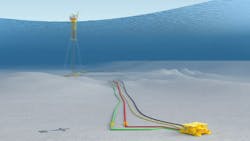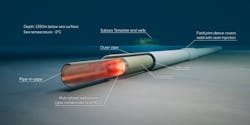Irpa partners sanction long-distance tieback to Hansteen spar platform offshore Norway
Offshore staff
STAVANGER, Norway — Equinor has submitted a plan for development and operation for the Irpa gas discovery in the Norwegian Sea to Norway’s Minister for Petroleum and Energy.
Irpa (ex-Asterix) was discovered in 2009 in the deepwater Vøring Basin, at a location 80 km west of Equinor’s Aasta Hansteen spar platform and 340 km west of Bodø. Estimated recoverable gas resources are about 20 Bcm.
The gas will be phased into existing infrastructure to the Aasta Hansteen platform and transported to the Nyhamna gas processing plant via the offshore Polarled pipeline.
From Nyhamna, the gas will head south to the UK and mainland Europe via the Langeled pipeline system.
Equinor expects production to start in late 2026, and it projects an overall cost for the development of NOK14.8 billion ($1.45 billion), including three wells and an 80-km pipeline to the spar platform.
Thereafter, there will be joint production from Irpa and the Aasta Hansteen Field through 2031, with Irpa then continuing to produce until 2039.
The combination of the deepwater and low temperatures on the seabed at Irpa led to qualification of new technology for the pipeline.
The partners include Equinor Energy (operator) 51%, Wintershall DEA (19%), Petoro (20%) and Shell (10%).
11.22.2022

